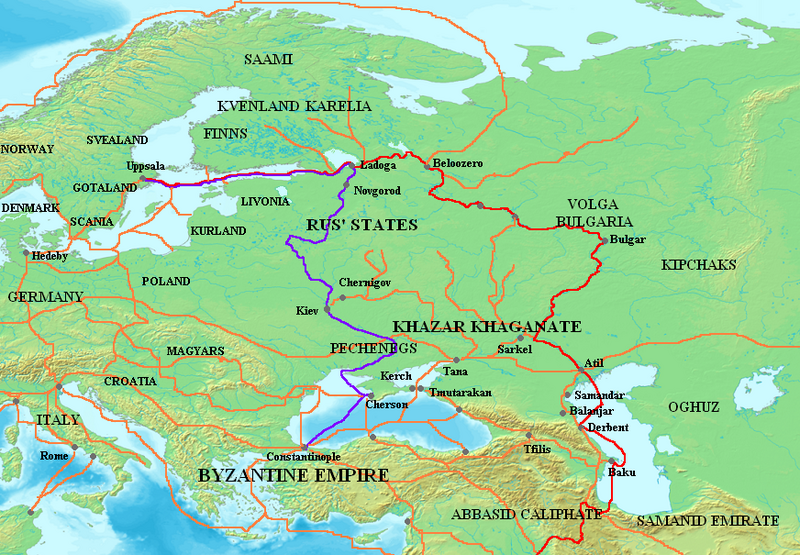File:Varangian routes.png
Jump to navigation
Jump to search


Size of this preview: 800 × 555 pixels. Other resolutions: 320 × 222 pixels | 872 × 605 pixels.
Original file (872 × 605 pixels, file size: 859 KB, MIME type: image/png)
File history
Click on a date/time to view the file as it appeared at that time.
| Date/Time | Thumbnail | Dimensions | User | Comment | |
|---|---|---|---|---|---|
| current | 05:29, 3 October 2023 |  | 872 × 605 (859 KB) | OrionNimrod | Restore original: "Wallachians" added by Romanian user, however it was no Wallachia in the 8-11th c: British historian, Martyn Rady - Nobility, land and service in medieval Hungary (p91–93): the sources before the 13th century do not contain references to Vlachs anywhere in Hungary and Transylvania or in Wallachia. Byzantine sources mentioned Vlachs all deep in the Balcan. Also map should make by academic historians not by personal POV. |
File usage
The following page uses this file:


